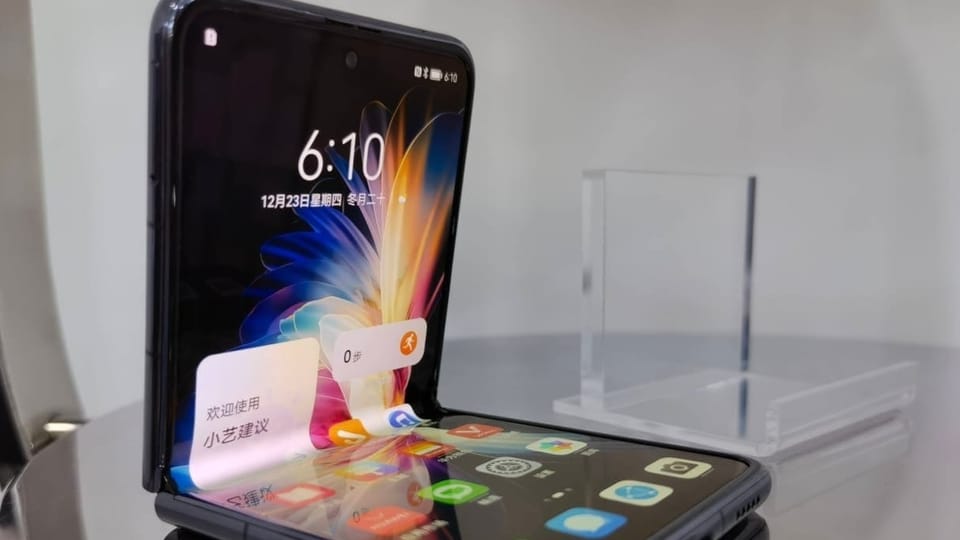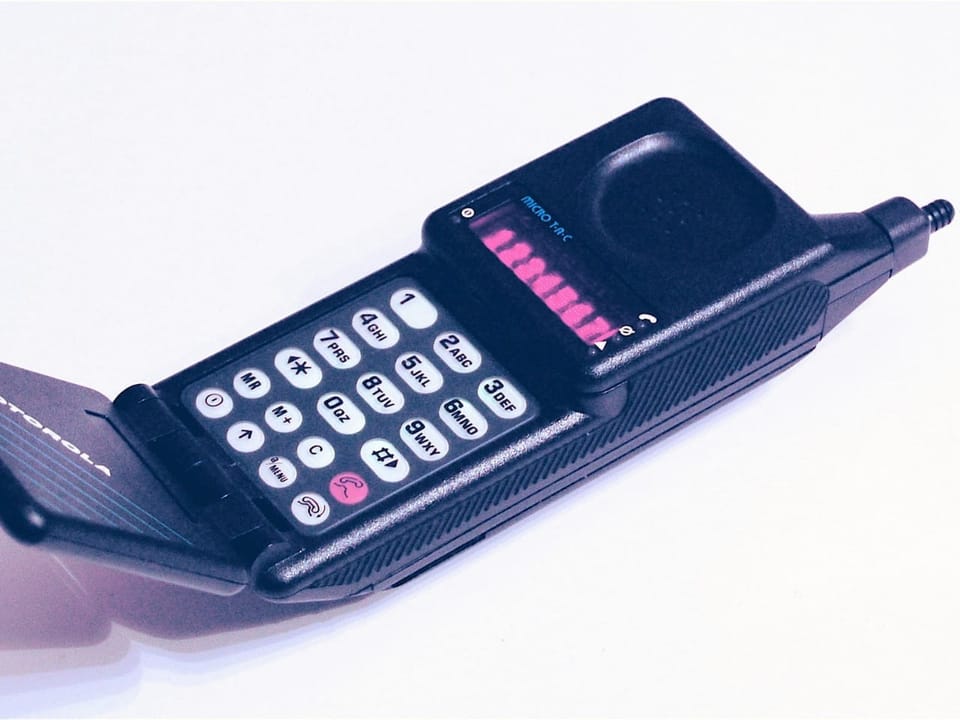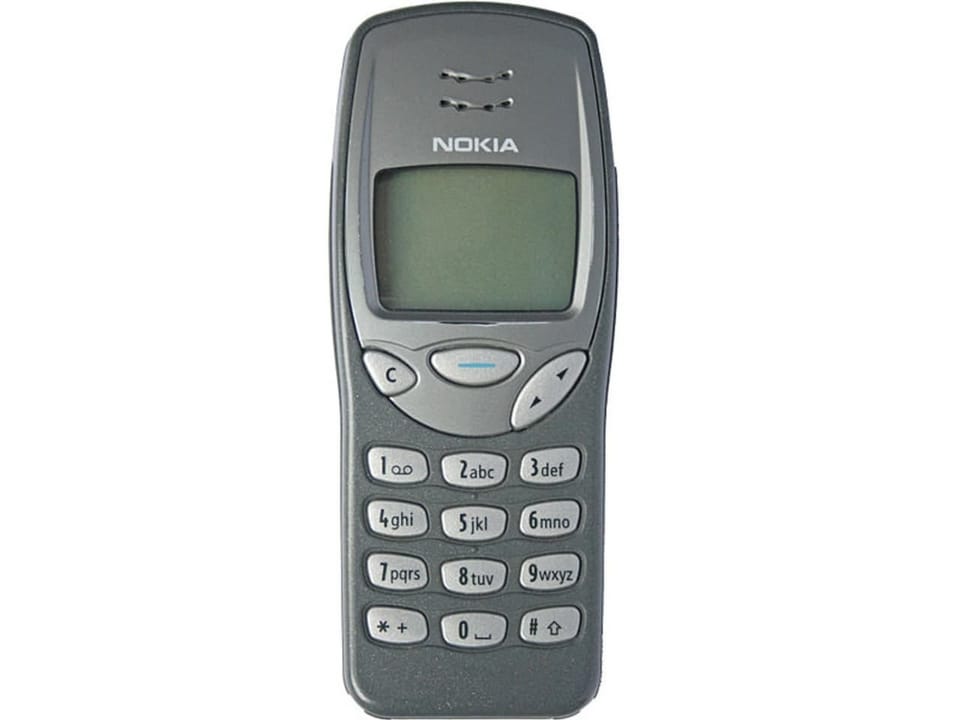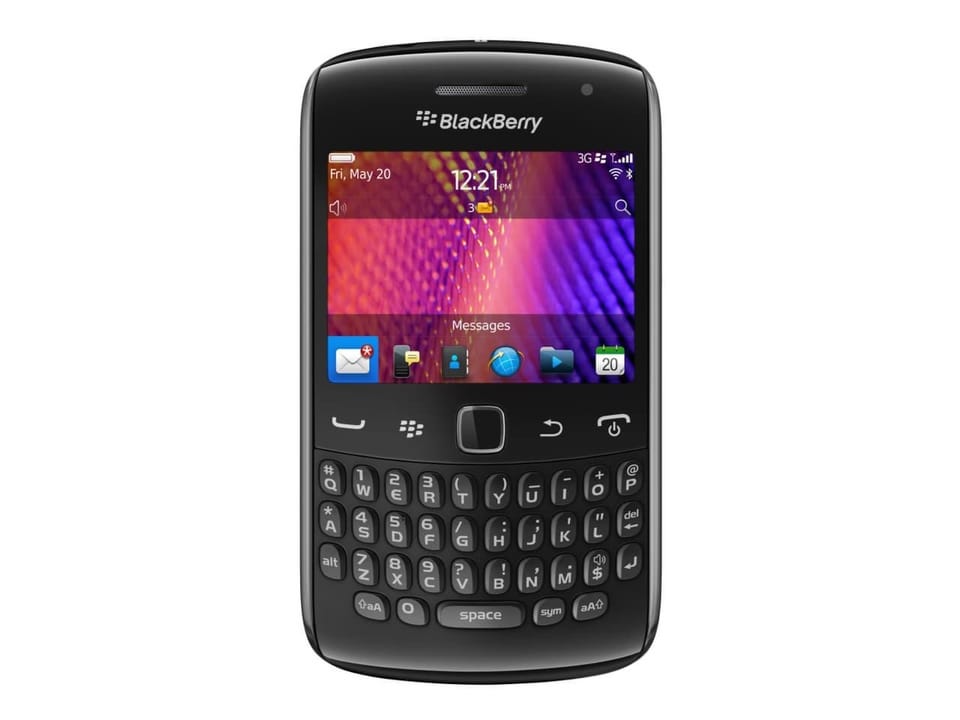Contents
Easy in your pocket today, heavy as a brick back then. The history of the mobile phone.
In the meantime, everyone carries half their lives digitally around with them. Losing or stealing your cell phone is catastrophic. It all started exactly 50 years ago.
1973 – ein historic call
“Hi, Joel,” said Motorola engineer Martin Cooper on April 3, 1973 in downtown New York. ‘I’m calling you from a mobile phone. But a real mobile phone. A personal, portable mobile phone.»
Out of sheer astonishment, according to what Cooper said, it was initially quiet on the other end of the line. Pure amazement – a symbol of the beginning of a new era.
1983 – a “block” comes onto the market
It took ten years for Motorola to launch the first commercial mobile phone: the DynaTAC 8000x. The “block” cost several thousand francs, initially weighed just under a kilo, had a 25-centimetre-long antenna and a battery life of up to 30 minutes.
But the development was rapid. At the end of the 1980s, Motorola developed the world’s first clamshell phone. One approached the trouser pocket format.
But the prices remained high: In 1990, “Kassensturz” took a close look at an Ericsson mobile phone. It cost 6,000 francs, excluding the battery (225 francs) and charger (335 francs).
1990s – the worldwide breakthrough
The mobile phone became more and more a multifunctional device, eventually mutating into a stylish handheld computer. On December 3, 1992, Vodafone employee Richard Jarvis received the first text message: “Merry Christmas”.
The Finnish brand Nokia continued to develop mobile phone technology: With the 6110 model, “Snake” was launched in 1997 as the first mobile phone game for the general public. Two years later, the Nokia 7110 is the first phone with wireless Internet access, and the same year, the 3210 uses automatic text recognition for the first time.
In 1999, mobile phones with an integrated camera came onto the market for the first time. In the same year, RIM followed with the first Blackberry. This made it possible for the first time to call up e-mails via a mobile Internet connection.
2007 – first mobile phone with a touchscreen
But the smartphone boom only really started with the iPhone. For the first time, a mobile phone could be operated using a touchscreen.
An index finger running across the display. A murmur in the audience. Then thunderous applause. When Apple CEO Steve Jobs introduced the iPhone 2G, the enthusiasm knew no bounds.
The first iPhone marked the beginning of a new era, a paradigm shift. Thanks to various applications, the iPhone revolutionized Internet use.
In 2012, WhatsApp, Viber, WeChat, Telegram and Signal were already being used more than SMS. And almost at the same time, the first iPhone with a voice assistant came onto the market. Users could now verbally give their smartphone instructions. In the same year, Apple integrated emojis into the character set.
The competition caught up. Android models often developed as cheap alternatives to Apple products.

Legend:
The foldable Huawei P50 Pocket was presented at a trade fair on December 23, 2021 in Shenzhen, China.
IMAGO / VCG
And so the development of smartphones is now also increasingly being shaped by the Asian region: On April 5, 2019, South Korea will be the first country to introduce the 5G standard, which promises even faster Internet surfing. In the same year, the South Korean company Samsung and the Chinese manufacturer Huawei launch smartphones with a foldable screen.
It remains to be seen what follows.





